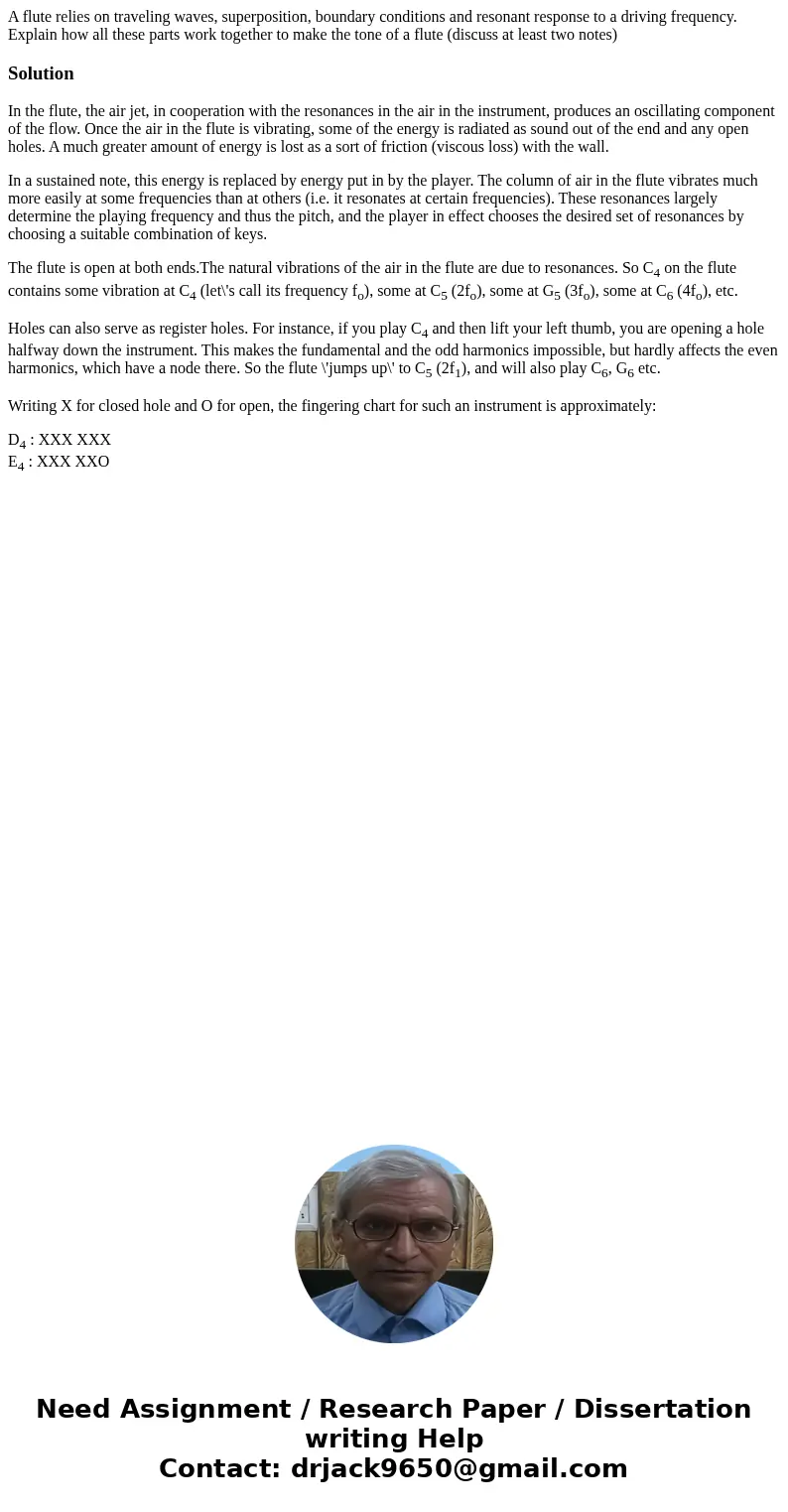A flute relies on traveling waves superposition boundary con
A flute relies on traveling waves, superposition, boundary conditions and resonant response to a driving frequency. Explain how all these parts work together to make the tone of a flute (discuss at least two notes)
Solution
In the flute, the air jet, in cooperation with the resonances in the air in the instrument, produces an oscillating component of the flow. Once the air in the flute is vibrating, some of the energy is radiated as sound out of the end and any open holes. A much greater amount of energy is lost as a sort of friction (viscous loss) with the wall.
In a sustained note, this energy is replaced by energy put in by the player. The column of air in the flute vibrates much more easily at some frequencies than at others (i.e. it resonates at certain frequencies). These resonances largely determine the playing frequency and thus the pitch, and the player in effect chooses the desired set of resonances by choosing a suitable combination of keys.
The flute is open at both ends.The natural vibrations of the air in the flute are due to resonances. So C4 on the flute contains some vibration at C4 (let\'s call its frequency fo), some at C5 (2fo), some at G5 (3fo), some at C6 (4fo), etc.
Holes can also serve as register holes. For instance, if you play C4 and then lift your left thumb, you are opening a hole halfway down the instrument. This makes the fundamental and the odd harmonics impossible, but hardly affects the even harmonics, which have a node there. So the flute \'jumps up\' to C5 (2f1), and will also play C6, G6 etc.
Writing X for closed hole and O for open, the fingering chart for such an instrument is approximately:
D4 : XXX XXX
E4 : XXX XXO

 Homework Sourse
Homework Sourse